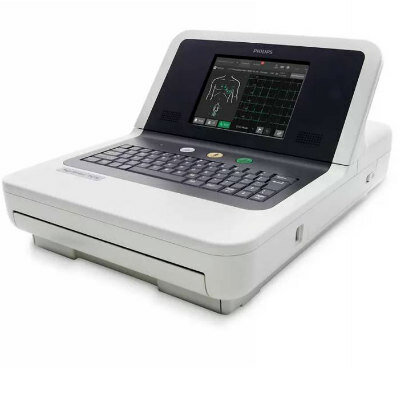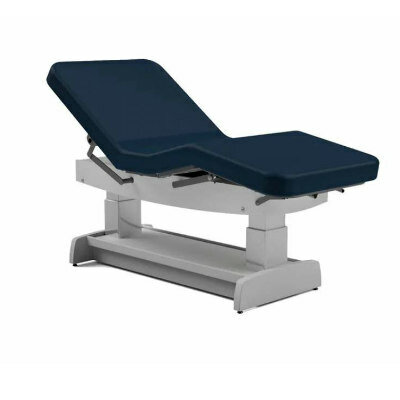AR System Enables Free-Hand, Real-Time Needle Guidance for Prostate Cancer Diagnosis
|
By HospiMedica International staff writers Posted on 06 Mar 2023 |

Prostate cancer is the second most common cause of cancer-related deaths among men, according to the US Centers for Disease Control and Prevention. Transperineal (TP) biopsy is one of the conventional methods used for diagnosing and treating prostate cancer by collecting tissue samples through a needle inserted through the perineum wall. TP biopsy typically involves a pre-operation MRI scan and a transrectal ultrasound, with the images combined and displayed on a monitor for the urologist to visualize. The urologist can perform the needle insertion process free-hand or through a grid-based method. However, 2D visualization of a 3D region can make the needle's guidance and visualization a challenging task.
To address this issue, researchers from the US National Institutes of Health (NIH, Bethesda, MD, USA) have proposed an approach based on an augmented reality (AR) system called HoloLens. In their recent paper published in the Journal of Medical Imaging, the researchers have detailed their successful HoloLens AR system that accurately and effectively projects MRI and ultrasound images onto patients, helping to guide a needle to the target. The HoloLens AR system employs a volumetric 3D scan, like an MRI scan, to create an accurate view of the patient. Leveraging reference data from the patient, the MRI scan can be superimposed precisely onto the patient. The superimposed image is fed into the HoloLens goggles worn by the urologist and enables viewing the patient as well as the MRI of the patient in proper alignment. The HoloLens goggles also enable the urologist to view the image at different angles by moving the head. HoloLens can also display the pre-planned needle path on the patient, the target tissue of the prostate, and the real-time needle position during the procedure.
To evaluate their AR system's image overlay accuracy and needle targeting precision, the researchers utilized a 3D-printed phantom. They used the free-hand as well as planned-path guidance methods to guide needles into a gel phantom, and subsequently recorded the needle placement errors. The system was also used to deliver soft tissue markers onto tumors of a human pelvis phantom. The researchers found similar placement errors associated with both free-hand and planned-path guidance methods. Moreover, all implanted soft tissue markers were inside or in close proximity to the tumors.
“The current methods have certain limitations to them,” said Dr. Ming Li from the NIH who led the research. “Robot-assisted guidance is costly and adds procedural time, while other methods require a certain path for the needle that leaves out the outer reaches of the prostate. These problems are solved using the HoloLens AR system, which provides the doctor with the ability to use a free-hand approach.”
“The HoloLens has the potential to provide more flexibility than the current grid-based TP methods and can do so accurately,” highlighted Li. “By providing a 3D immersive experience, the HoloLens AR system makes free-hand lesion targeting feasible. As needle procedures move from rectum to the perineum, AR systems could provide great clinical value to doctors and patients by solving the problems associated with prostate intervention procedures.”
Related Links:
NIH
Latest Surgical Techniques News
- Hydrogel-Based Miniaturized Electric Generators to Power Biomedical Devices
- Custom 3D-Printed Orthopedic Implants Transform Joint Replacement Surgery
- Wearable Technology Monitors and Analyzes Surgeons' Posture during Long Surgical Procedures
- Cutting-Edge Imaging Platform Detects Residual Breast Cancer Missed During Lumpectomy Surgery
- Computational Models Predict Heart Valve Leakage in Children
- Breakthrough Device Enables Clear and Real-Time Visual Guidance for Effective Cardiovascular Interventions
- World’s First Microscopic Probe to Revolutionize Early Cancer Diagnosis
- World’s Smallest Implantable Brain Stimulator Demonstrated in Human Patient

- Robotically Assisted Lung Transplants Could Soon Become a Reality
- AI to Provide Heart Transplant Surgeons with New Decision-Making Data
- New Surgical Tool Empowers Precision and Confidence in Operating Room
- Future Muscle-Powered Surgical Robots Could Perform Minimally Invasive Procedures inside Body
- Non-Invasive Technique Combines Cardiac CT with AI-Powered Blood Flow for Heart Bypass Surgery
- First-Of-Its-Kind Device Repairs Leaky Tricuspid Heart Valve
- New Signaling Method Enables Precise Localization of Miniature Robots and Surgical Instruments inside Body
- Novel Catheter System Enables Safer, More Cost-Effective Transseptal Procedures
Channels
Artificial Intelligence
view channel
AI-Powered Algorithm to Revolutionize Detection of Atrial Fibrillation
Atrial fibrillation (AFib), a condition characterized by an irregular and often rapid heart rate, is linked to increased risks of stroke and heart failure. This is because the irregular heartbeat in AFib... Read more
AI Diagnostic Tool Accurately Detects Valvular Disorders Often Missed by Doctors
Doctors generally use stethoscopes to listen for the characteristic lub-dub sounds made by heart valves opening and closing. They also listen for less prominent sounds that indicate problems with these valves.... Read moreCritical Care
view channel
Deep-Learning Model Predicts Arrhythmia 30 Minutes before Onset
Atrial fibrillation, the most common type of cardiac arrhythmia worldwide, affected approximately 59 million people in 2019. Characterized by an irregular and often rapid heart rate, atrial fibrillation... Read more
Breakthrough Technology Combines Detection and Treatment of Nerve-Related Disorders in Single Procedure
The peripheral nervous system (PNS) serves as the communication network that links the brain and spinal cord to every other part of the body. It consists of two parts: the somatic nervous system, which... Read morePatient Care
view channel
Surgical Capacity Optimization Solution Helps Hospitals Boost OR Utilization
An innovative solution has the capability to transform surgical capacity utilization by targeting the root cause of surgical block time inefficiencies. Fujitsu Limited’s (Tokyo, Japan) Surgical Capacity... Read more
Game-Changing Innovation in Surgical Instrument Sterilization Significantly Improves OR Throughput
A groundbreaking innovation enables hospitals to significantly improve instrument processing time and throughput in operating rooms (ORs) and sterile processing departments. Turbett Surgical, Inc.... Read more
Next Gen ICU Bed to Help Address Complex Critical Care Needs
As the critical care environment becomes increasingly demanding and complex due to evolving hospital needs, there is a pressing requirement for innovations that can facilitate patient recovery.... Read moreGroundbreaking AI-Powered UV-C Disinfection Technology Redefines Infection Control Landscape
Healthcare-associated infection (HCAI) is a widespread complication in healthcare management, posing a significant health risk due to its potential to increase patient morbidity and mortality, prolong... Read moreHealth IT
view channel
Machine Learning Model Improves Mortality Risk Prediction for Cardiac Surgery Patients
Machine learning algorithms have been deployed to create predictive models in various medical fields, with some demonstrating improved outcomes compared to their standard-of-care counterparts.... Read more
Strategic Collaboration to Develop and Integrate Generative AI into Healthcare
Top industry experts have underscored the immediate requirement for healthcare systems and hospitals to respond to severe cost and margin pressures. Close to half of U.S. hospitals ended 2022 in the red... Read more
AI-Enabled Operating Rooms Solution Helps Hospitals Maximize Utilization and Unlock Capacity
For healthcare organizations, optimizing operating room (OR) utilization during prime time hours is a complex challenge. Surgeons and clinics face difficulties in finding available slots for booking cases,... Read more
AI Predicts Pancreatic Cancer Three Years before Diagnosis from Patients’ Medical Records
Screening for common cancers like breast, cervix, and prostate cancer relies on relatively simple and highly effective techniques, such as mammograms, Pap smears, and blood tests. These methods have revolutionized... Read morePoint of Care
view channel
Critical Bleeding Management System to Help Hospitals Further Standardize Viscoelastic Testing
Surgical procedures are often accompanied by significant blood loss and the subsequent high likelihood of the need for allogeneic blood transfusions. These transfusions, while critical, are linked to various... Read more
Point of Care HIV Test Enables Early Infection Diagnosis for Infants
Early diagnosis and initiation of treatment are crucial for the survival of infants infected with HIV (human immunodeficiency virus). Without treatment, approximately 50% of infants who acquire HIV during... Read more
Whole Blood Rapid Test Aids Assessment of Concussion at Patient's Bedside
In the United States annually, approximately five million individuals seek emergency department care for traumatic brain injuries (TBIs), yet over half of those suspecting a concussion may never get it checked.... Read more
New Generation Glucose Hospital Meter System Ensures Accurate, Interference-Free and Safe Use
A new generation glucose hospital meter system now comes with several features that make hospital glucose testing easier and more secure while continuing to offer accuracy, freedom from interference, and... Read moreBusiness
view channel
Johnson & Johnson Acquires Cardiovascular Medical Device Company Shockwave Medical
Johnson & Johnson (New Brunswick, N.J., USA) and Shockwave Medical (Santa Clara, CA, USA) have entered into a definitive agreement under which Johnson & Johnson will acquire all of Shockwave’s... Read more
















